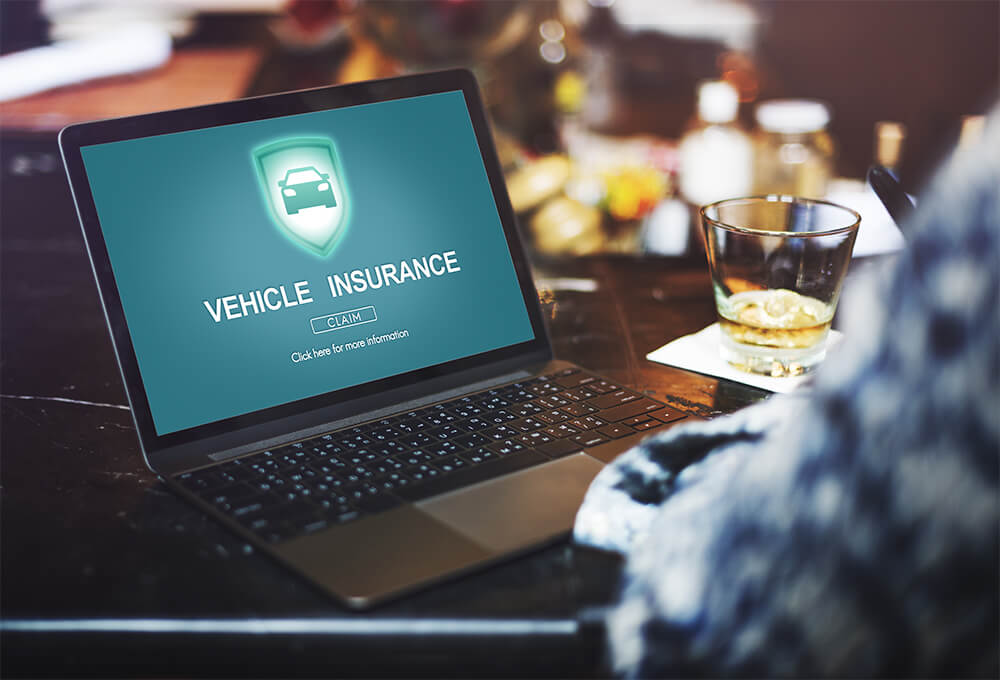General Insurance Blogs, Articles & Updates by - Magma Insurance
Have us call you
- RENEW YOUR POLICY
- BUY NEW POLICY

Know about these cool technologies for safe two-wheeler rides
With increased riders' registrations and two-wheelers plying on the road, motorcycling is becoming more popular in India, thanks to new technologies mainly observed in cars. This digitalization in the automotive industry helps improve fuel efficiency, reduces emissions, and eliminates the possible risk for the two-wheeler and rider.
Manufacturers are steadily researching new technologies to make the bike experience safe. This article will look at a few inventions that have revolutionized how we think about motorcycle safety.
1. Anti-lock Braking System (ABS):
Anti-lock Braking System prevents the wheel(s) of a motorbike from locking up during hard braking. This technology employs speed sensors on both wheels to correctly estimate wheel speed and recognize when a wheel will lock.
This mechanism adjusts the braking pressure to prevent the tyres from locking up and maintain the motorcycle's balance. It also helps to minimize braking distance in several situations. Motorcycles equipped with anti-lock brakes are less likely to meet an accident on the road.
2. Traction Control System (TCS):
Traction control avoids drifting while accelerating on a slippery surface. It limits engine power until the bike can travel without the wheels slipping and provides maximum turning stability.
The sensors and the Electronic Control Unit are the two primary components of a traction control system. The ECU captures data on gravitational forces, lean angles, and other factors. The sensors are constantly updating raw data about the motorcycle's present location. This information helps to adjust the amount of power sent to the back wheels and prevent skidding.
3. Slipper clutch mechanism:
A slipper clutch aims at reducing the effect of engine braking when the rider decelerates. It works by transmitting braking force through the chain drive, making the rear wheel shake and lose traction when the back wheel tries to move the engine quicker than it would under deceleration. The slipper clutch partly disengages the engine until the conditions are suitable for reengaging.
4. Tyre Pressure Monitoring System (TPMS):
This technology works by installing pressure monitoring sensors inside each tyre's valve. These sensors collect data from each tyre, send it to a module that compares it from both tyres and notify the rider if any tyre has low, high, or uneven pressure.
Low tyre pressure can cause slow handling, increasing your chance of meeting an accident. The TPMS technology assists you in avoiding such instances.
5. Ride By Wire technology (RBW):
Ride-by-wire is a new-age acceleration system; it eliminates the need for cables. It's an electronic throttle system that removes the mechanical throttle wire's coupling to the acceleration handlebar. This unique system results in faster and more accurate throttle response.
These cutting-edge technologies are helping bikers with safer riding experiences. As a rider, make sure your bike has these advanced safety features to provide you with a comfortable riding experience and the best possible protection. While you get prepared to upgrade for a bike loaded with these new safety-enhancing features for your bike, also remember to have valid two-wheeler insurance; not only is it necessary, but it is mandatory by the law. Always remember to get ideal 2 wheeler insurance online to improve your safety!
To know about the best 2 wheeler insurance online, click HERE .
Disclaimer: The information provided above is for illustrative purposes only. To get more details, please refer to policy wordings and prospectus before purchasing a policy.

How to ensure the safety of pillion riders during bike journeys
If you travel daily to work together or plan long rides during holidays, riding with a co-passenger always makes a journey lively and enjoyable.
Riding a two-wheeler demands alertness at all times. But, being accompanied by a pillion rider requires more vigilance. Most riders have a basic understanding of riding a bike safely, however, things change a lot when riding with a pillion rider.
Being a responsible rider, you must ensure the safety of your riding partner too. Any injury to the pillion rider might detract from the enjoyment of your travel. In this space, we’ve emphasized how to safeguard your co-rider during your bike trip.
1. Basic dos and don’ts for the pillion:
Dos:
• Always maintain a constant posture and balance your body weight
• Assist with the navigation
Don’ts:
• Never engage the rider in too many conversations and unnecessary distractions
• Don't shift your body weight to the rider
• Avoid sudden reactions or jerky movements
2. Best use of a seat and a backrest:
An uneasy pillion passenger may shuffle in their seat, resulting in a persistent state of unbalance. Hence, investing in a decent quality backrest can be of great help. It not only guarantees the pillion rider’s comfort but also keeps the bike from losing balance.
3. Check your two-wheeler’s suspension adjustment:
A pillion rider results in a greater centre of gravity, which can affect the bike's handling. As a result, make sure your bike’s suspension is adjusted correctly. For example, installing an adjustable rear shock might assist you in achieving the proper setup for riding with a pillion rider.
4. Pay attention to your braking and turning:
These are the two factors that have a significant influence on a two-wheeler’s balance. Keep your speed under control, specifically on the turns. Also, practice a progressive braking technique rather than grabbing a fistful. These are the two moments in which you should be aware of the presence of a pillion rider and alter your movement accordingly.
5. Communication is the key:
Some co-passengers feel uncomfortable while riding. They are scared of speed or sharp turns and find it difficult to adjust with maneuvering. Your pillion rider must know your motorcycle riding skills and is comfortable while on the road. You should have the transparency to tell the other person to speak out the fear, and you can accordingly adjust the speed to make the co-passenger comfortable. If you are riding with someone, always make sure you both can talk things out comfortably and enjoy the ride without hesitation.
6. Safety should always be a priority:
One cannot compromise safety, especially when riding with a pillion rider. As two-wheelers are more prone to road accidents, it’s your responsibility to take safety measures seriously. Invest in good quality riding gear, purchase ISI-certified helmets for you and your co-rider. Don’t let unfortunate incidents affect the excitement of your ride. Check for bike insurance online, browse through different options, and buy one to avoid financial setbacks in case of damages.
Making your pillion rider feel safe about riding with you is important for a pleasant ride. There has to be trust and understanding between both riders. Take extra care when riding with kids or older people. Cover distances together but keep safety and comfort as the priority.
Looking for bike insurance online, click HERE .
Disclaimer: The information provided above is for illustrative purposes only. To get more details, please refer to policy wordings and prospectus before purchasing a policy.

How to install WiFi in your car and make it a moving hotspot
The internet is a whole new universe that is opening up several opportunities for people. It is a clear manifestation of innovation and endless possibilities. And WiFi lets us access the internet quickly at reasonable rates.
For almost all the new car buyers, cutting-edge features such as WiFi connectivity is increasingly becoming popular. With WIFI onboard, you feel like resting on the couch at home and accessing social media, working on the go, checking important news, or having quick connectivity with emergency services and navigations.
So, how do you install WiFi in your car? Nearly every new car variant provides an in-built WiFi feature. But if you are not changing your vehicle anytime soon, read through the different ways to install WiFi in your car and make it a moving hotspot.
1. Use your phone as a WiFi hotspot:
All smartphones have the option of enabling personal or WiFi hotspots, and it can be an excellent quick fix. But it is not a long-term solution for a few significant reasons- iPhone allows five devices at a time to connect to a hotspot. In contrast, Android allows ten users, consuming a lot of data from your limited Internet plan. Can an unlimited data plan solve the problem? No, because this is data tethering. Therefore, many Internet-providing companies restrict the amount of data you can transfer through mobile hotspots. Also, switching on the hotspot will drain your cellphone's battery quickly.
2. Buy a portable hotspot device:
It is perfect for people having mobile offices. Just a suitable hotspot device is enough to send emails, have meetings, even a quick refreshing episode of your favourite series. A mobile hotspot device is a portable WiFi router that also has a cellular connection. It uses data, but not from your smartphone plan but a different internet plan instead.
You can either pay a monthly cost or with the "pay-as-you-go" option. But these devices require electrical power, which you can supply from the car's electrical outlet, the cigarette lighter, or a USB port. You can opt to buy a device designed to plug into the USB port of the laptop.
3. Go seamless and install a wireless router:
These are similar to the ones at your homes. You can also install a wireless router in your car, but you will need to buy a data pack with it. This is ideal for business vehicles requiring configuring for mobile connectivity, but for casual users, the whole process of installing can be a little expensive.
With remote working influencing our lives profoundly, making your car an internet hub can help you explore unique touchpoints of joyful experiences. Now, with the advancements of internet mobility, you can plan frequent business trips that allow you to work along with the luxury of travelling, access real-time traffic data, or navigate smoothly with the help of enhanced maps.
But remember, before choosing a way to install WiFi in your vehicle, consider factors like affordability and data usage per day. Thus, calculate the other maintenance costs, car insurance renewal, commuting costs before adding extra WiFi expenses. In the end, it is about your personal preference and weighing the pros and cons.
Click HERE to know more about motor insurances for your car.
Disclaimer: The information provided above is for illustrative purposes only. To get more details, please refer to policy wordings and prospectus before purchasing a policy.

How to be the saviour of bike accident victims? Know about these first aid tips
According to government data, 50% of India's road accident deaths might have been avoided if the injured had received basic first aid within an hour of the accident. Generally, before the paramedics arrive, police and pedestrians are the first ones to be present at the spot of the accident. If they have proper knowledge about first aid, they can be the link between the life and death of an individual. These quick points will help you learn some essential first aid tips if you find yourself in a similar situation.
1. Look for injuries:
When you're at the scene, clear out the traffic, and importantly, don't panic. Take the injured person carefully to a safe place and quickly look at all the injuries they have. Excessive blood loss is the main reason for the wounded person succumbing to the accident. If the victim is losing too much blood, tie the part above the wound to restrain blood flow and avoid further loss.
Important tip: Many individuals have their first aid kits on the bike; you can use the bandages from the first-aid kit to help you with the first aid tasks.
2. Call an Ambulance right away:
102 is the national helpline number for the ambulance service. To the best of your knowledge, provide whatever information asked by the dispatcher.
3. Check the victim's air passage:
It's critical to check the airway to ensure they're not facing breathing difficulties. Then, constantly, keep checking their pulse and feel their nerves.
If the victim is responsive, it's a good sign that means they can breathe. But if the victim is unresponsive, make sure you put them in such a position that opens their airway. Here's how:
• Gently tilt the victim's head backwards by holding their forehead
• Lift their chin vertically upwards by placing two fingers beneath the bony area of their chin
4. Perform CPR:
If the process mentioned above didn't work, try combining it with CPR. It will assist in the re-establishment of the circulatory and respiratory systems. Here's how you can do it:
• Rest the victim on a plain flat surface
• Interlock your fingers and place your palms facing down on the chest for compression; push down on the chest for roughly two inches. Repeat for a total of 30 compressions
• If you notice that CPR is working, place them in the recovery position (on either of their sides). Make sure to support their neck to prevent additional damage
5. Keep the victim warm at all times:
When an injury is severe, the core and skin temperatures can drop considerably. This can lead to hypothermia and worse death. It's crucial to keep the victim warm, so use anything you have on hand, whether it's a jacket, a blanket, or a pullover. Try to provide good support to the spine of the injured.
Don’t over-exert yourself in your attempt to revive the injured; it might worsen the situation. You need to understand that you’re not a medical professional, so whatever you do involves potential risks. It is righteous to save lives, but only within the boundaries of our expertise, knowledge, and capacity. Your best care during the ‘Golden hour’ can give someone a new life.
We’ll witness an accident or a medical situation that needs our assistance at some time in our lives. But remember that it can be the other way around; you might get caught up in an accident. In such times any aid is of great help. Safety first is what you should bear in mind when riding the bike. Ride with proper safety gears for uncompromised security. You can rely on Magma HDI bike insurance online plans to provide an additional layer of protection to your bike. Buy bike insurance online if you haven’t got one yet.
Click HERE to know more about the best bike insurance online to keep your bike and finances safe.
Disclaimer: The information provided above is for illustrative purposes only. To get more details, please refer to policy wordings and prospectus before purchasing a policy.

How are hybrid cars a boon for our environment
Hybrid vehicles are the next significant advancement in the automobile's evolution. They combine the best features of both classic internal combustion engine vehicles and modern-age electric cars. In practicality, both electricity and petroleum power the motor of a hybrid vehicle, making them incredibly fuel-efficient. As a result, a hybrid automobile consumes less than half the fuel as a regular family car. This also means that they are not only cost-effective but also environmentally sustainable.
Unlike electric vehicles, hybrid cars don't have a plug-in system for charging the batteries. Instead, these vehicles use kinetic energy to charge the batteries. Hybrid vehicles are gaining popularity and are making headlines of a green revolution worldwide. In this article, we'll see precisely how.
1. Lower carbon footprint:
Hybrid vehicles lower carbon emissions while boosting fuel efficiency by combining power from both electricity and fossil fuels. The vehicle generates its power with the help of energy stored in its lithium-ion batteries and supplied to electric motor generators on the electric side. These motors provide power to the wheels while simultaneously generating electricity through regenerative braking. Hybrid vehicles do consume gasoline, but they do it with small engines that produce low emissions. The engines are either employed to create electricity for the batteries or power the electric motors.
2. Hybrid vehicles have better mileage:
In addition to advancements in engine technology, characteristics like lighter chassis material, stronger tyres with greater pressure, better aerodynamics, and a smaller fuel tank helps a hybrid car be more efficient and save money on petrol, contributing to reduced usage of fossil fuels.
3. Hybrid cars make little to no noise:
Among ecologically sustainable automobiles, hybrid vehicles occupy centre stage. They are known for being extremely quiet in urban traffic circumstances, in addition to emitting less pollution. They may be able to lessen urban noise pollution as a result of this. You might not hear anything at all if a hybrid car drives down the street. It’s that swift and silent!
4. Recycled material goes into the making of hybrid cars:
To build automobile components, hybrid car manufacturers blend automotive eco-plastic with regular plastic. This is not only environmentally beneficial but also cost-effective. Its environmental impact is most apparent when looking at the overall effect of mass manufacturing rather than on a case-by-case basis.
5. Car battery production can be environment friendly:
Although hybrid automobiles do not contribute much to road pollution, the production of their batteries can be hazardous if done incorrectly. But the corporations are developing more environmentally friendly production lines to ensure minimum pressure on the planet.
Also, suppose you compare the carbon emission caused by the production of batteries to the carbon emission of cars running on fossil fuels in the longer run. In that case, hybrid vehicles prove to be more sustainable.
Finals Thoughts
Despite being still a relatively new technology, Hybrid vehicles will only get more advanced and sustainable as time goes on. Moreover, as the pollution created by ICE cars becomes a more significant problem, hybrids provide a rational option for a cleaner future.
Like traditional cars are subject to mandatory insurance in our country, hybrid vehicles are no exception. They need to have a motor insurance too. So if you're planning to join this electric revolution happening in our nation, have thorough research on the best car insurance online that provides an insurance cover to your next hybrid vehicle.
Click HERE to know the best car insurance online.
Disclaimer: The information provided above is for illustrative purposes only. To get more details, please refer to policy wordings and prospectus before purchasing a policy.

Hit and run parking scenario? Know what to do next
Imagine how you would feel while returning to your parked car and finding it dented out of nowhere. You went to your neighbourhood store for some groceries; that was enough to ruin your day as well as harm your pockets, right? Unfortunately, hit and run parking scenarios are the frequent incidents to be noticed around.
The driver's fleeing with no apology or contact note is the least you can expect to worsen your situation. Such incidents might result in a reactive scenario as well. Here is the guide to help you handle such a situation, considering all the factors and possibilities.
The first step
Note the incident in detail. You may or may not have a witness around or any CCTV camera present always. So, take the notes—the time, date, day, damage level, surrounding, etc. Also, take pictures of the damage/dent/scratch caused to your car.
Inform the cops
After the incident, if the damage is severe, it is essential to follow the legalities and inform the police. Report it to police and solve the incident peacefully. This will also help you get your insurance claim depending on the severity level. Sometimes, a personal injury is likely to happen if you are present in the car at the time of the incident.
Search for the accused driver
A well-mannered driver would always be present at the spot till you return and get it resolved. Or least leave a detailed apology note after such an incident with the contact details. But it's rare to find such. That is why it makes it 'Hit and run,' because people tend to leave the spot irresponsibly out of fear. You may hunt the accused driver either by asking the witnesses about it or watching the CCTV footage if available.
Contact your insurance company
Contact your insurance company immediately and register your complaint. Even if you don't have details of the driver who damaged your car or any CCTV footage to prove it, your insurance policy may still save your costs and help you recover damage. Hence, it's always helpful to have a vehicle insurance policy. While many people don’t calculate such risks and ignore the features of a good car insurance policy, get an online car insurance policy that provides financial cover for such damages.
Now you would question what if the driver fled? Will your car get covered in such a situation? Yes, you will get the claim! If the offender runs away from the accident spot without informing or compensating for your loss, then you can contact your insurance company. There are two types of coverage provided by insurance companies.
a. Uninsured motorist/driver coverage
This claim is possible when the person who hit your car is uninsured. Additionally, this is applicable for physical injury, so don’t claim it if there is no human presence in the vehicle at the time of the incident.
b. Coverage of collision
This coverage is a super shield. Regardless of who was at fault, this covers all the compensations for your car accident. You just need to prove that your car suffered a loss due to an unfortunate incident, and that’s it; you get the claim.
On a conclusive note, try to engage with the witnesses. Once in a while, everyone faces such incidents, so remain calm and follow the legal procedures. Consider the opposite person's explanation and look at the whole picture of the accident.
And, the good news! You will be compensated in every possible way if you have a low-risk driving profile and a good insurance policy for your car. So, check online car insurance policy features and see if it provides a comprehensive cover for your vehicle.
Click HERE to learn about the best insurance plans to protect your car.
Disclaimer: The information provided above is for illustrative purposes only. To get more details, please refer to policy wordings and prospectus before purchasing a policy.

Buying a used car? Avoid these seven mistakes
Buying a used vehicle has taken centre stage as people believe that second hand vehicles are not a bad investment. A well maintained second hand car saves you a lot of money, gives you the same satisfaction as a new car, and keeps providing quality transportation for many years at a much reduced rate.
Did you know that a new car loses 11% of its value on the way home? And significant vehicle depreciation occurs in the first few years of use. But with a used car, the bulk of depreciation has already happened!
Here is the catch; tons of pre-owned vehicles are available in the market, and narrowing down the best deals is rather complicated when you do not have enough knowledge. So, to save your time and money, here are 7 common mistakes you should avoid when buying a used car.
1. Not enough research:
Do not rely on the car dealer blindly about everything. Before you take a decision to buy a car:
• Note down your requirements
• Figure out what things are non-acceptable to you
• Decide what model and price fit best to your needs
2. Not having the test driving:
Test drive is your chance to inspect the car’s condition thoroughly. Check the engine noise, brake, clutch control, steering components, gearbox, air conditioning, and how comfortable you are when in the driving seat. It is better to ask a car expert friend to accompany you for the test drive. And do not make the mistake of taking a short test drive; this is your time to feel the vehicle and help you make the right decision.
3. Ignoring the online reviews:
They are there to help you buy a perfect vehicle. Though every business receives a few negative comments, only if there are consistently bad reviews about a dealership or a car model, think twice before buying it.
4. Not getting it checked by a mechanic:
Remember always to get a professional’s second opinion. Please do not pay for the car you are interested in unless you get your trusted mechanic to verify your choice. Otherwise, you might find many unpleasant surprises down the road.
5. Skip reading the car documents and paperwork:
Agreed, this is the most tedious part of buying a car, but diligently checking the paperwork will help you understand the whole process. You will also be aware of the perks provided by the dealer, which you can take advantage of! Also, proofreading all the documents will ensure the trust factor and the authenticity of the car and the previous owner.
6. Relying on appearance:
It is essential to understand that a car’s performance is the main factor determining its overall condition. Sure, a good-looking car will make a good impression on the people around you, but it is not hard to paint your vehicle and add a few accessories to make it look polished and new. Instead of relying on external factors and aesthetics, focus on the car’s performance to decide the value for money.
7. Not asking about the history:
Ask whether any car parts were changed, or major repair work was performed on the car. Please do not trust the dealer’s word here as they might trick you into buying a car with a bad history. It is crucial to confirm whether the vehicle was involved in an accident or holds any other concerning history.
Buying a used car means no excessive fees or tons of paperwork, plus the lower car insurance renewal. And you still get to buy a certified and thoroughly inspected vehicle. Also, along with your RC documents, ensure that the dealer transfers the insurance in your name too by checking the car insurance renewal status.
Buying pre-owned cars is not a luxury asset, instead an opportunistic investment done for fulfilling dreams. So go for the best deal for your driving experience!
Are you buying a used car? HERE is everything you need to know about car insurance?
Disclaimer: The information provided above is for illustrative purposes only. To get more details, please refer to policy wordings and prospectus before purchasing a policy.

What are the frequently asked questions about motor insurance?
Getting motor insurance regardless of the fact that whether it is new or old, is always confusing. Technical jargons, guarantee amount, clauses, picking motor insurance company, etc. are some things which everybody does not understand, and it leads them to make wrong decisions. They all look lucrative from afar, but which is the right one.
Hence, here we have compiled a list of frequently asked questions that will help you in getting the right motor insurance for you.
Question: What does a motor insurance cover?
Motor insurance covers you against any financial burden due to damage of your insured vehicle.
Question: Does the motor insurance offer different coverage types?
Yes, different types of insurance coverage types are available such as bodily liability, comprehensive, property damage liability and uninsured and underinsured and collision. You can choose the insurance coverage type as per your needs and requirements.
Question: Is buying motor insurance mandatory?
Yes, it is mandatory to buy motor insurance though the laws of carrying insurance vary from state to state. It is recommended you visit the online website of the government transportation of your state to make sure that you got the right motor insurance.
Question: Is a motor insurance expensive?
Yes, motor insurance is relatively expensive. Though you should also consider the credit report and driving the history of your vehicle while buying insurance.
Question: What happens if I forget to pay the premium fee for my insurance policy?
You will get a warning notice from the motor insurance company. But if you forget paying a premium fee over and over again, they can either issue late charges or will cancel your policy. So, it is recommended to pay your premium fee on time.
Question: Can I change the motor insurance coverage if I want to change it?
Yes, if you want to change the motor insurance coverage then you can, but you might need to pay a cancellation fee. But if you wait till the policy maturity then you can change the coverage without extra fee.
Question: How can I get a discount on motor insurance?
Discounts are quite common when it comes to motor insurance. Different motor insurance companies offer different deals and discounts on motor insurance so you can choose the right one as per your needs and requirements.
Question: Can my gender affect the amount of the premium fee?
Yes, gender affects the premium rates of motor insurance. According to the statistics, male drivers are generally involved in more accidents. Therefore, companies offer motor insurance at a higher premium fee to males as compared to females.
Question: Can I get motor insurance even if my vehicle is more than 20 years old?
It depends upon the shape and condition of the vehicle you have. If your vehicle is not in a condition to get coverage, then it is not recommended you to get higher coverage and it does not make sense to spend a higher amount onto it.
Question: What is No Claim Bonus?
It is a discount after a claim-free year or an incentive for driving safe and avoiding accidents.
Question: What are the documents that are required to be submitted for a Motor Insurance claim?
Required documents differ from company to company but some of the most important document that would be required are: Claim form, registration copy of the vehicle, an estimate of the loss, original repair invoice and payment receipt.

